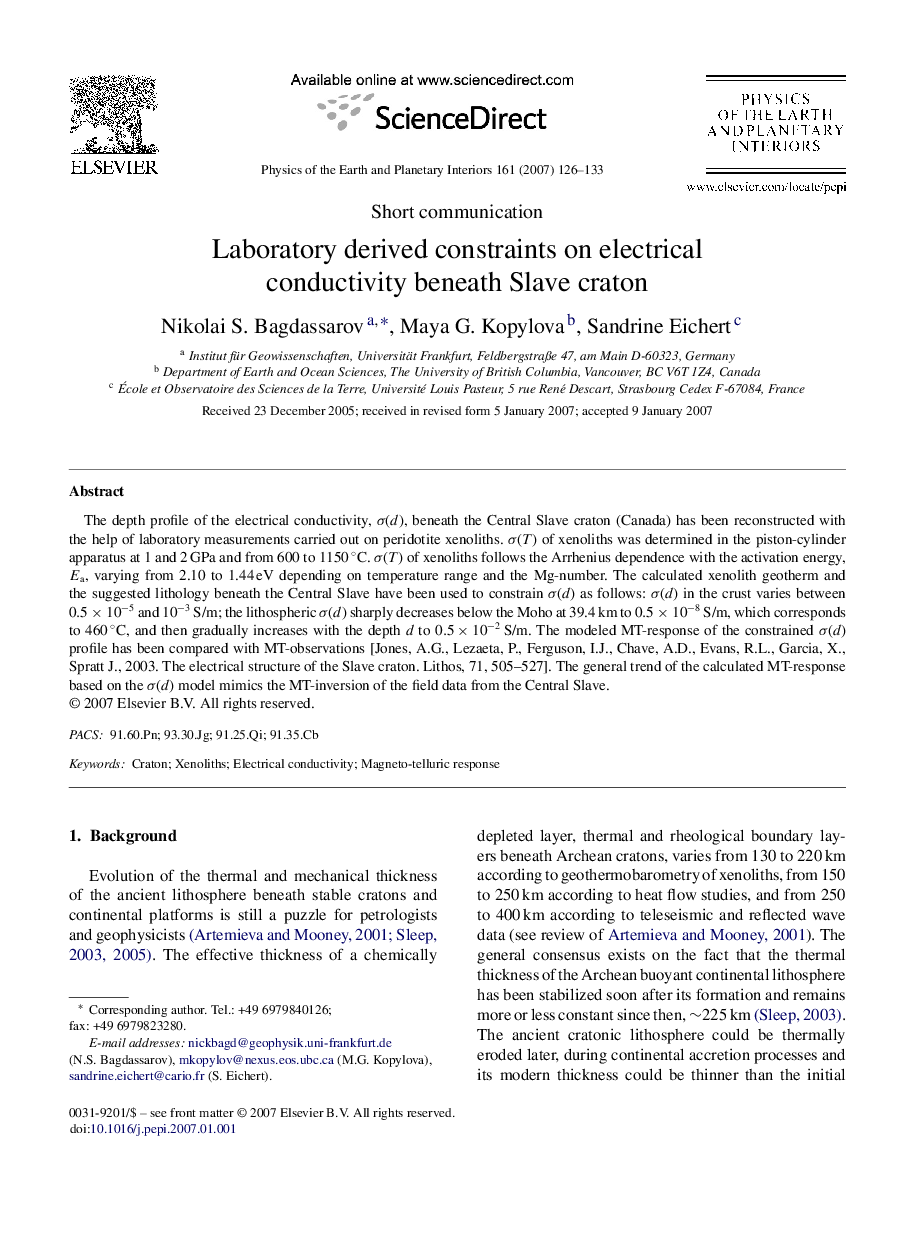| Article ID | Journal | Published Year | Pages | File Type |
|---|---|---|---|---|
| 4742774 | Physics of the Earth and Planetary Interiors | 2007 | 8 Pages |
Abstract
The depth profile of the electrical conductivity, Ï(d), beneath the Central Slave craton (Canada) has been reconstructed with the help of laboratory measurements carried out on peridotite xenoliths. Ï(T) of xenoliths was determined in the piston-cylinder apparatus at 1 and 2âGPa and from 600 to 1150â°C. Ï(T) of xenoliths follows the Arrhenius dependence with the activation energy, Ea, varying from 2.10 to 1.44âeV depending on temperature range and the Mg-number. The calculated xenolith geotherm and the suggested lithology beneath the Central Slave have been used to constrain Ï(d) as follows: Ï(d) in the crust varies between 0.5Ã10â5 and 10â3âS/m; the lithospheric Ï(d) sharply decreases below the Moho at 39.4âkm to 0.5Ã10â8âS/m, which corresponds to 460â°C, and then gradually increases with the depth d to 0.5Ã10â2âS/m. The modeled MT-response of the constrained Ï(d) profile has been compared with MT-observations [Jones, A.G., Lezaeta, P., Ferguson, I.J., Chave, A.D., Evans, R.L., Garcia, X., Spratt J., 2003. The electrical structure of the Slave craton. Lithos, 71, 505-527]. The general trend of the calculated MT-response based on the Ï(d) model mimics the MT-inversion of the field data from the Central Slave.
Related Topics
Physical Sciences and Engineering
Earth and Planetary Sciences
Geophysics
Authors
Nikolai S. Bagdassarov, Maya G. Kopylova, Sandrine Eichert,
